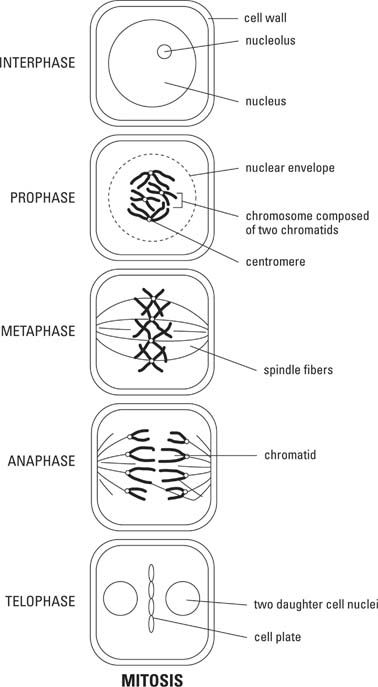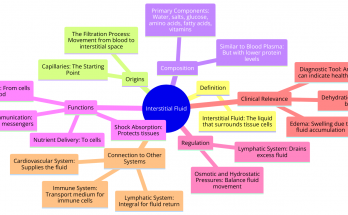Plant cell Mitosis
Plant cell Mitosis is the process of plant cell division in which a single parent cell divides into two identical daughter cells.
In the process of mitosis the genetic material in the parent cell is duplicated and separated into two identical sets which are divided into the two daughter cells.
The process of plant cell mitosis is divided into four stages – prophase, metaphase, anaphase, and telophase – these all steps are preceded by Interphase. At the end of the Plant cell Mitosis two new identical daughter cells are formed.
Plant cell Mitosis – Diagram

Interphase
Interphase is the phase of the cell cycle during which the cell is growing and carrying out its normal functions. In the process of Interphase the DNA is also replicated and prepared for cell division.
Also Check – Mitosis – Frequently Asked Questions and Answers
Prophase
Prophase is the first stage of mitosis. In prophase the chromosomes condense and become more visible .In prophase the nuclear envelope breaks down, and spindle fibers begin to form.
Metaphase
Metaphase is the second stage of mitosis. In the Metaphase phase the chromosomes line up along the equator of the cell and are attached to spindle fibers.
Anaphase
Anaphase is the third stage of mitosis. In Anaphase the spindle fibers pull the sister chromatids apart towards opposite poles of the cell.
Telophase
Telophase is the final stage of mitosis.In Telophase the nuclear envelope forms around the two identical sets of chromosomes . The Chromosomes begin to uncoil and become less condensed at this stage . The spindle fibers also break down in telophase.
Cell Wall
Cell wall is the rigid outer layer that surrounds the cell membrane in plant cells. Cell wall provides support and protection to the cell.
Also Check – Mitosis In Plant Cell and Animal Cell- Differences and Similarities
Nucleolus
Nucleolus is a small, round structure inside the nucleus of the cell. Nucleolus is responsible for producing ribosomes . Ribosomes are essential for protein synthesis.
Nucleus
This is the control center of the cell. It contains the cell’s DNA and is responsible for regulating all of the cell’s activities.
Also Check – Where does Mitosis and Meiosis occur ?
Nuclear Envelope
Nuclear Envelope is a double membrane which surrounds the nucleus of the cell. Nuclear Envelope controls the flow of materials in and out of the nucleus.
Chromosome Composed of two Chromatids
Chromosomes are structures that contain DNA. Each chromosome is made up of two identical chromatids that are joined at a region called the centromere.
Centromere
Centromere is the region of a chromosome where the two sister chromatids are joined together.
Spindle Fibers
Spindle Fibers are long, thin fibers that are responsible for separating the sister chromatids during Cell division.
Chromatid
Each Chromosome is made up of two identical chromatids that are joined at the centromere.
Two Daughter Cell Nuclei
Two Daughter Cell Nuclei are the two new nuclei that are formed when the cell divides.
Cell Plate
Cell Plate is a structure that forms during cell division in plant cells. Cell Plate eventually develops into a new cell wall that separates the two daughter cells.
Also Check – 7 Important Difference Between Mitosis and Meiosis
Also Check – Can there be Mitosis without DNA Replication in S phase ?
